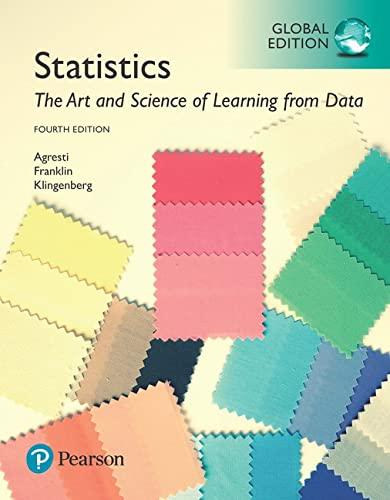Ask Marilyn Marilyn vos Savant writes a column for Parade magazine to which readers send questions, often
Question:
Ask Marilyn Marilyn vos Savant writes a column for Parade magazine to which readers send questions, often puzzlers or questions with a twist. In the April 28, 1996, column, a reader asked, “A company decided to expand, so it opened a factory generating 455 jobs.
For the 70 white-collar positions, 200 males and 200 females applied. Of the people who applied, 20% of the females and only 15% of the males were hired. Of the 400 males applying for the blue-collar positions, 75% were hired. Of the 100 females applying, 85% of were hired. A federal Equal Employment Opportunity Commission (EEOC) enforcement official noted that many more males were hired than females and decided to investigate. Responding to charges of irregularities in hiring, the company president denied any discrimination, pointing out that in both the white-collar and blue-collar fields, the percentage of female applicants hired was greater than it was for males. But the government official produced his own statistics, which showed that a female applying for a job had a 58% chance of being denied employment whereas male applicants had only a 45% denial rate. As the current law is written, this constituted a violation. . . . Can you explain how two opposing statistical outcomes are reached from the same raw data?” (Copyright 1996 Marilyn vos Savant. Initially published in Parade Magazine. All rights reserved.)
a. Construct two contingency tables giving counts relating gender to whether hired (yes or no), one table for white-collar jobs and one table for blue-collar jobs.
b. Construct a single contingency table for gender and whether hired, combining all 900 applicants into one table. Verify that the percentages not hired are as quoted above by the government official.
c. Comparing the data in the tables constructed in parts a and
b, explain why this is an example of Simpson’s paradox.
Step by Step Answer:

Statistics The Art And Science Of Learning From Data
ISBN: 9781292164878
4th Global Edition
Authors: Alan Agresti, Christine A. Franklin, Bernhard Klingenberg






